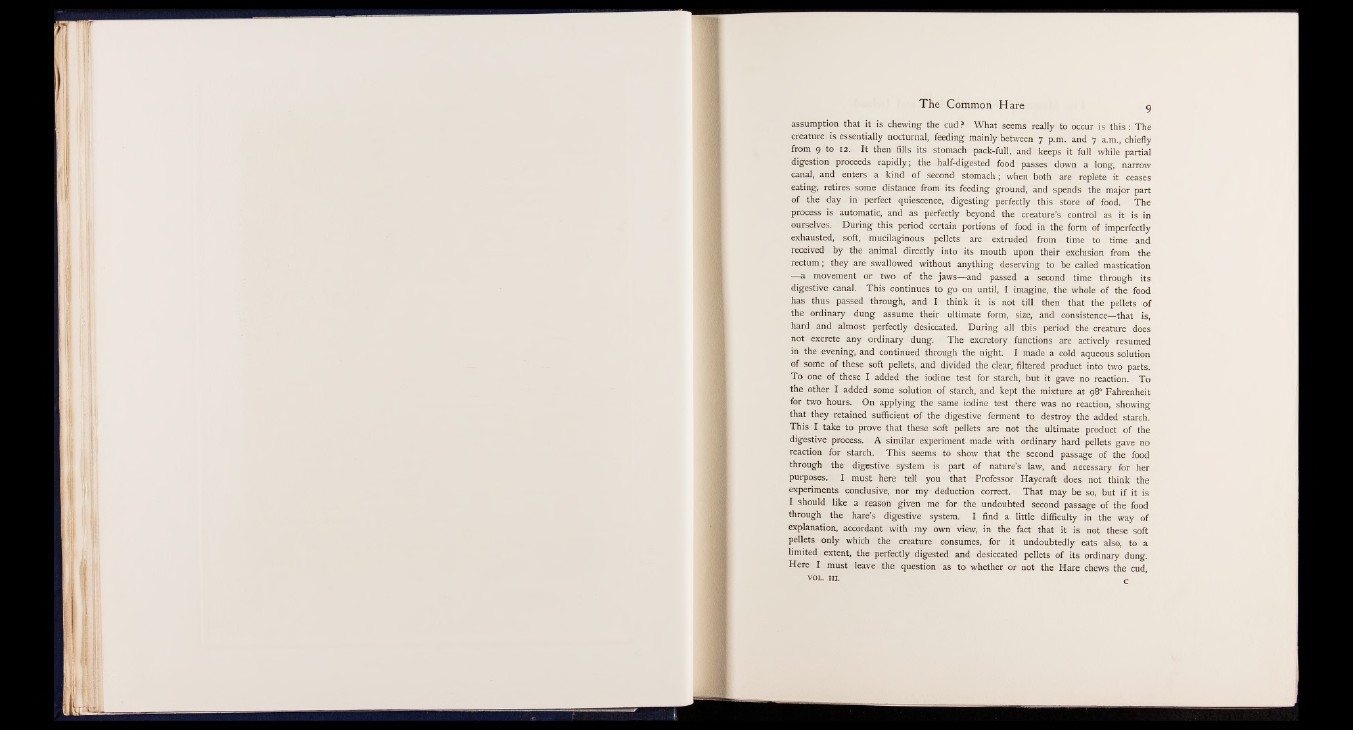
assumption that it is chewing the cud ? What seems really to occur is th is : The
creature is essentially nocturnal, feeding mainly between 7 p.m. and 7 a.m., chiefly
from 9 to 12. It then fills its stomach pack-full, and keeps it full while partial
digestion proceeds rapidly; the half-digested food passes down a long, narrow
canal, and enters a kind of second stomach ; when both are replete it ceases
eating, retires some distance from its feeding ground, and spends the major part
of the day in perfect quiescence, digesting perfectly this store of food. The
process is automatic, and as perfectly beyond the creature’s control as it is in
ourselves. During this period certain portions of food in the form of imperfectly
exhausted, soft, mucilaginous pellets are extruded from time to time and
received by the animal directly into its mouth upon their exclusion from the
rectum; they are swallowed without anything deserving to be called mastication
— a movement or two of the jaws— and passed a second time through its
digestive canal. This continues to go on until, I imagine, the whole of the food
has thus passed through, and I think it is not till then that the pellets of
the ordinary dung assume their ultimate form, size, and consistence— that is,
hard and almost perfectly desiccated. During all this period the creature does
not excrete any ordinary dung. The excretory functions are actively resumed
in the evening, and continued through the night. I made a cold aqueous solution
of some of these soft pellets, and divided the clear, filtered product into two parts.
To one of these I added the iodine test for starch, but it gave no reaction. To
the other I added some solution of starch, and kept the mixture at 98° Fahrenheit
for two hours. On applying the same iodine test there was no reaction, showing
that they retained sufficient of the digestive ferment to destroy the added starch.
This I take to prove that these soft pellets are not the ultimate product of the
digestive process. A similar experiment made with ordinary hard pellets gave no
reaction for starch. This seems to show that the second passage of the food
through the digestive system is part of nature’s law, and necessary for her
purposes. I must here tell you that Professor Haycraft does not think the
experiments conclusive, nor my deduction correct. That may be so, but if it is
I should like a reason given me for the undoubted second passage of the food
through the hare’s digestive system. I find a little difficulty in the way of
explanation, accordant with my own view, in the fact that it is not these soft
pellets only which the creature consumes, for it undoubtedly eats also, to a
limited extent, the perfectly digested and desiccated pellets of its ordinary dung.
Here I must leave the question as to whether or not the Hare chews the cud,
vol. hi. c